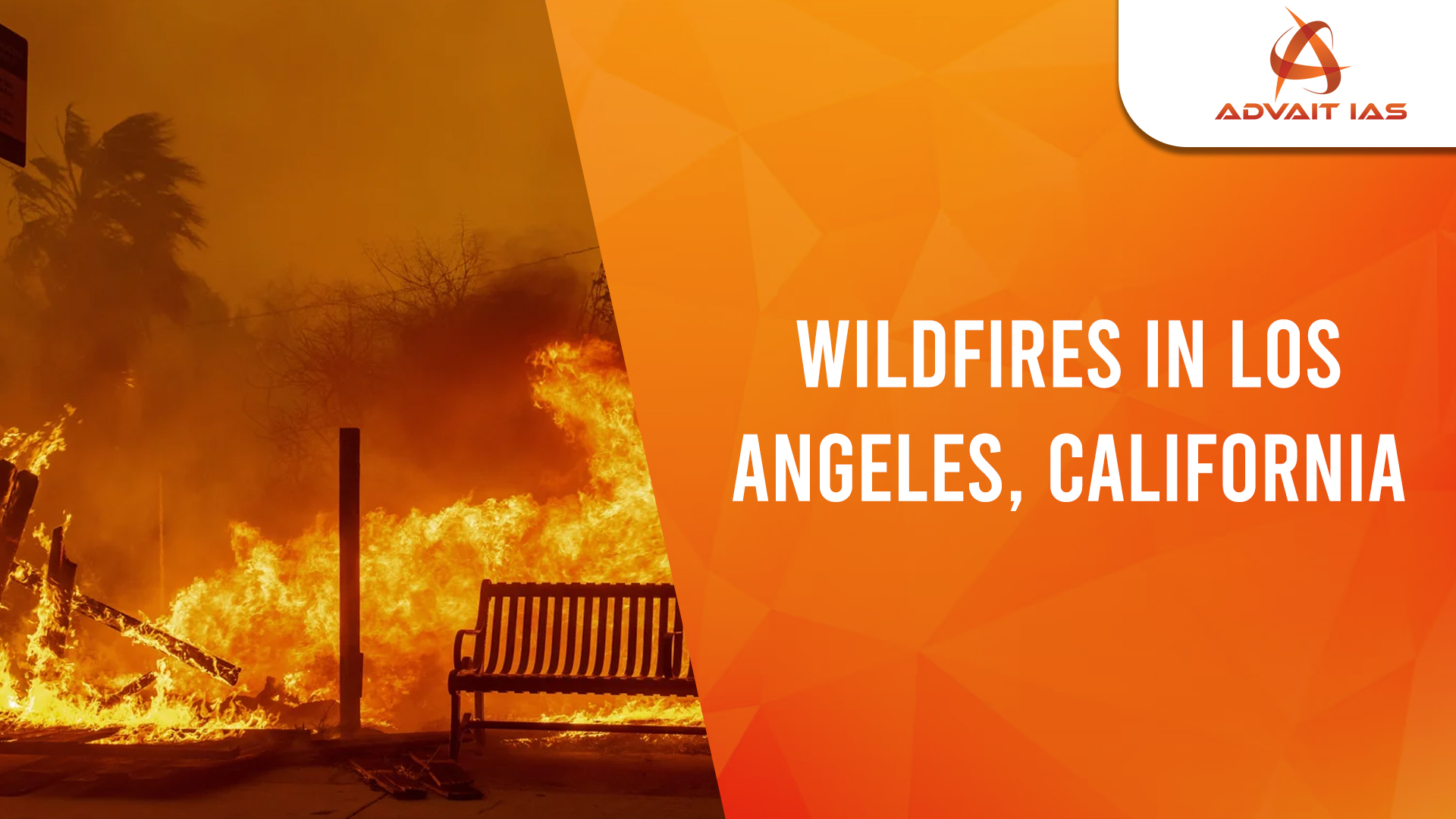Los Angeles is grappling with devastating wildfires, resulting in fatalities, property losses, and significant environmental damage. Authorities are employing pink fire retardants to mitigate the spread of flames.
Causes and Impacts of Wildfires in California
Natural Causes
- Lightning Strikes:
- Ignite dry vegetation like trees and grass.
- High winds exacerbate fire spread during dry seasons.
- Climate Change:
- Unpredictable Weather Patterns: Heavy rains in 2022–2023 led to dense vegetation, now dried by the unusually arid winters of 2024–2025.
- Global Warming: Increases drought severity and dries out vegetation, fuelling intense wildfires.
- Santa Ana Winds:
- High-pressure systems in the Great Basin blow dry, hot winds towards the Pacific coast between October–January.
- Winds compress as they descend the Sierra Nevada and Santa Ana Mountains, increasing temperature and reducing humidity.
- These winds accelerate flame spread across dry landscapes.
Human Causes
- Negligence:
- Unattended campfires.
- Sparks from vehicles (dragging chains or faulty parts).
- Discarded cigarettes.
- Power Lines: Faulty infrastructure or wind-disturbed lines igniting dry vegetation.
- Intentional Actions: Arson or fire-setting by smugglers/wildlife traffickers to divert attention or destroy evidence.
Impacts of Wildfires
- Economic Loss: Destruction of lives, property, and infrastructure.
- Air Pollution:
- Release of particulate matter (PM 2.5), organic chemicals, metals, acids, dust, and allergens.
- Land Degradation: Intense heat consumes nutrients, rendering soil barren.
- Biodiversity Loss: Damage to ecosystems and wildlife habitats.
Pink Fire Retardant:
- A chemical slurry containing ammonium phosphate and salts such as ammonium polyphosphate, with red dye for visibility.
- Phos-Chek: Widely used in the US, containing:
- Ammonium-based fertilizers (e.g., diammonium phosphate).
- Iron oxide (red dye) for clear application.
- Thickening agents to improve adherence and minimize drift.
How it Works
- Sprayed ahead of a wildfire, coating vegetation to create a barrier that limits oxygen supply needed for combustion.
- The pink hue improves target precision during aerial application.
Concerns
- Toxicity: Contains metals like chromium and cadmium, posing risks of:
- Cancer and organ damage in humans.
- Aquatic toxicity when it contaminates water systems.
California’s wildfires, exacerbated by climate change and human activities, underline the need for preventive measures such as:
- Improving infrastructure resilience (e.g., power lines).
- Educational campaigns to reduce negligence.
- Advancing eco-friendly fire retardants to minimize environmental harm.






